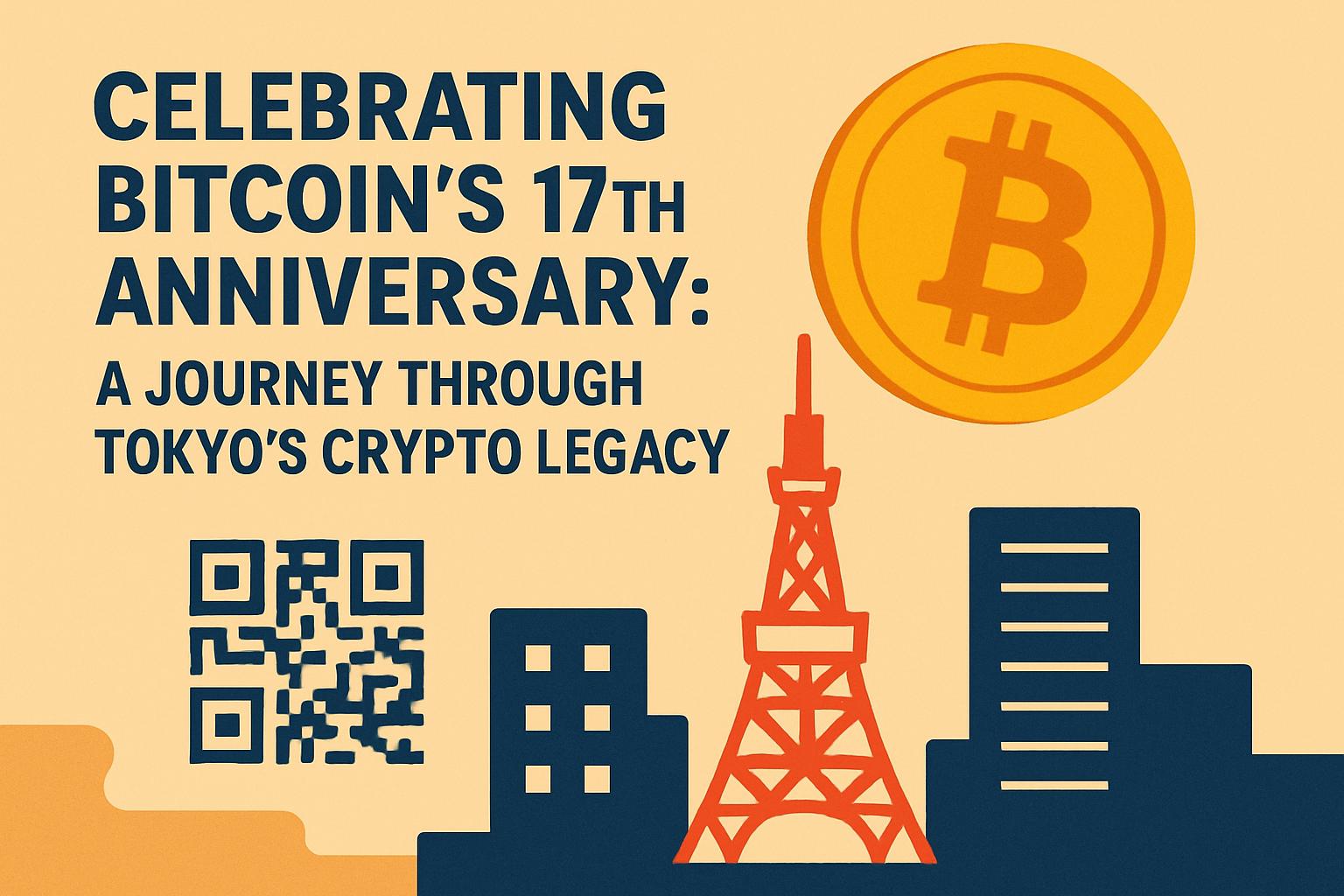Seventeen years ago, on an unassuming October 31st in 2008, the enigmatic figure known as Satoshi Nakamoto released the Bitcoin White Paper: Bitcoin: A Peer-to-Peer Electronic Cash System. Within these pages lay the blueprint for what would become a revolutionary financial instrument—Bitcoin. While the White Paper has garnered global recognition, few know that the blockchain was originally termed ‘Time Chain’ by Nakamoto. This early nomenclature suggests a chronological approach, rooted in cryptographic linkage—a testament to enduring innovation.
The Celebration in Tokyo
In Tokyo, the heart of Bitcoin lore, enthusiasts recently gathered to commemorate this poignant anniversary. Hosted by the Tokyo Bitcoin Base, the event illuminated the intrinsic ties between Japan and Bitcoin through interactive discussions and engaging activities. Intriguingly, the development of the QR Code, crucial for enabling Bitcoin’s peer-to-peer transactions, also finds its origins in Japan, highlighting the nation’s subtle yet profound contributions to the crypto ecosystem.
There’s speculation that Tokyo might have been Satoshi’s secretive residence, a place where the seeds of Bitcoin’s genesis were quietly sown. Despite the global dispersion of Bitcoin enthusiasts, Japan boasts a disproportionately high number of silent ‘whales’—individuals who hold substantial amounts yet remain elusive.
Trials and Tribulations: The Fall of Mt. Gox
Japan’s relationship with Bitcoin, however, is not without its scars. Notably, the infamous collapse of Mt. Gox, once the world’s largest Bitcoin exchange, left an indelible mark. A devastating hack led to the loss of thousands of bitcoins, eroding public trust and casting a shadow over the nascent industry. The incident prompted stringent regulatory reforms, setting the stage for a cautious resurgence.
A Renaissance in the Making
Despite the setbacks, Tokyo has remained a steadfast bastion of crypto innovation. In the early days, it was home to pioneering businesses like The Pink Cow, a restaurant that accepted Bitcoin payments before it became mainstream. These early adopters played a pivotal role in normalizing Bitcoin transactions, with the QR code simplifying peer-to-peer payments.
The city has experienced a rebirth, with a burgeoning tech community rallying around blockchain technology and financial innovation. This revival positions Japan as a leader in blockchain integration and fintech advancement, with the promise of becoming a model for other nations.
A Lasting Legacy
The legacy of Satoshi Nakamoto continues to be a topic of intrigue and inspiration. His vision transformed financial systems and catalyzed a movement that traverses beyond currency, influencing decentralized applications and societal structures. Japan’s role, enriched by successive waves of tech advancement and culture of innovation, is succinctly tied to this narrative.
As the crypto landscape evolves, Tokyo—a city imbued with tradition and transformation—remains at the forefront, illustrating the intricate relationship between place, technology, and the future of finance. This anniversary is not just a celebration of Bitcoin’s history, but a tribute to the enduring spirit of innovation across borders.

![[News] Bitcoin at a Turning Point? 10x Research Signals a Bullish Macro Shift Ahead](https://cryptoexplores.com/wp-content/uploads/2025/06/new20250616.jpg)
![[News] Binance Lists $HOME, the Gas-Free, Bridge-Free All-in-One DeFi App](https://cryptoexplores.com/wp-content/uploads/2025/06/news20250617.jpg)